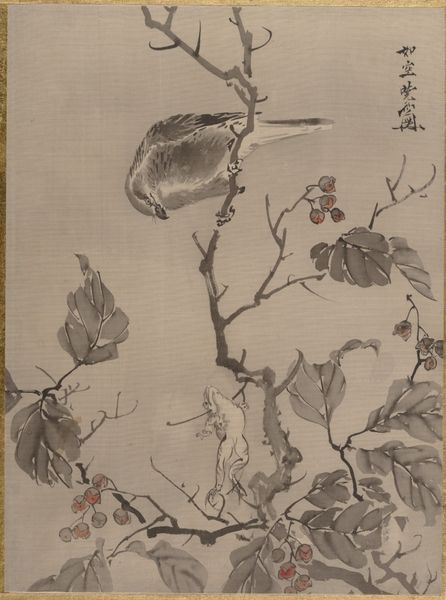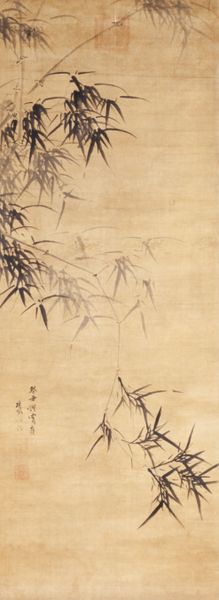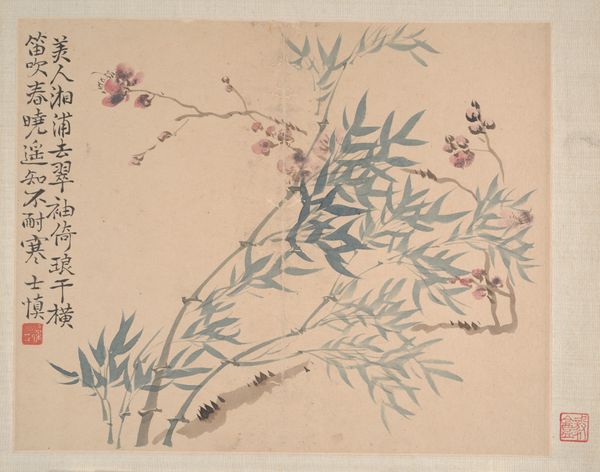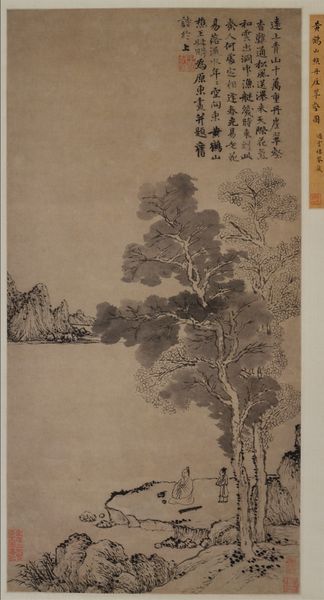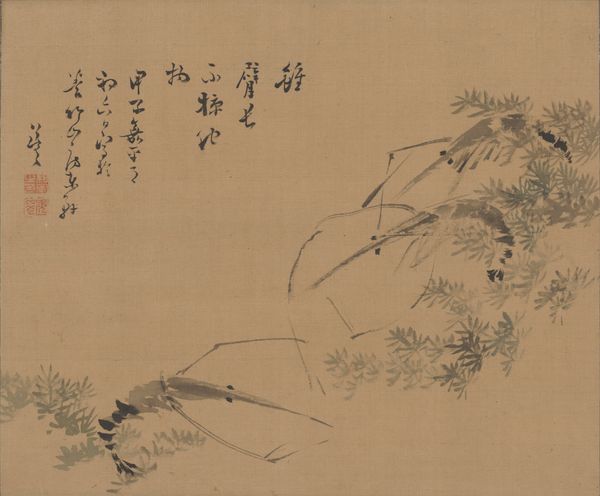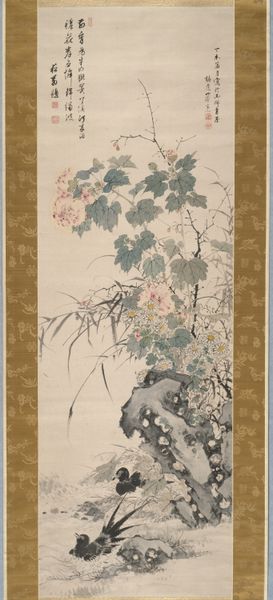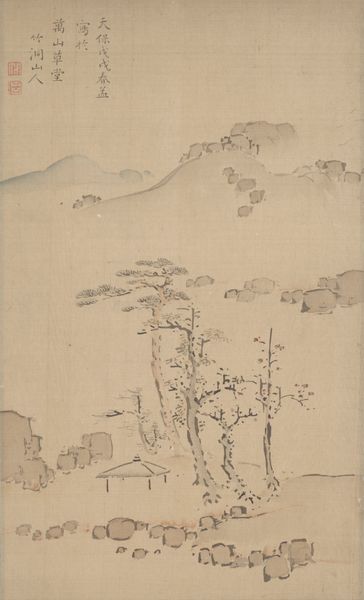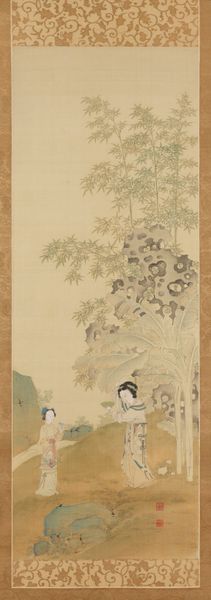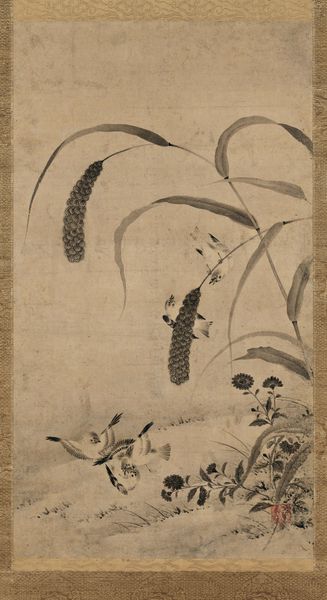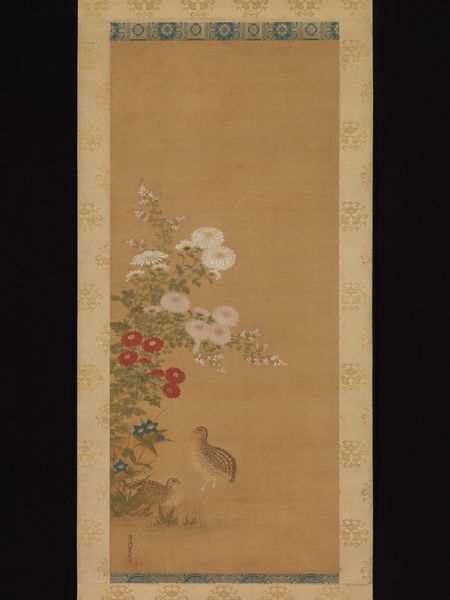
Jewel-like Countenance c. mid 19th century
0:00
0:00
Dimensions: 48 1/4 × 21 5/8 in. (122.56 × 54.93 cm) (image)75 5/8 × 28 1/8 in. (192.09 × 71.44 cm) (mount, without roller)
Copyright: Public Domain
Curator: Before us is "Jewel-like Countenance," a hanging scroll in watercolor by Tsubaki Chinzan, dating from around the mid-19th century. Editor: My first impression is of serene decay. There's a delicate beauty, a quiet acceptance of the cycle of life implied by the drooping seed head. Curator: Precisely. The composition leverages the verticality of the scroll format to depict these botanical elements with a remarkable sense of airiness. Consider the arrangement of the lotus pads, their placement creates depth through the masterful use of spatial recession, a characteristic of traditional East Asian painting. Editor: I'm interested in the choice of subject matter. Why render decaying lotuses with such attention to detail? Was it a popular theme at the time? Perhaps a symbolic connection between decay and spiritual transcendence in the face of socio-political upheavals of the 19th century? Curator: Absolutely, there is historical and cultural significance at play. Scholars were embracing painting and the painting market became flooded, allowing more artistic styles to emerge. But technically speaking, observe the economy of line, the seemingly effortless brushstrokes that define form. Each stroke carries calligraphic weight, a testament to Chinzan’s mastery of the medium. And note how he integrates negative space – the off-white that balances with the delicate lines to establish tone and movement. Editor: It's true, the interplay of solid forms and the seemingly blank paper around it guides the eye. This was likely originally made for an individual with wealth and education that understood these types of social cues. It begs the question, who was this meant to influence? Curator: An important consideration. This artwork would appeal to someone familiar with Zen aesthetics. By allowing blank space it allowed individuals to read their interpretation of their lives into the work and therefore the art was speaking to their beliefs on nature. Editor: Indeed. Thank you for enriching my understanding of it. It leaves me contemplating the enduring power of simplicity. Curator: And for prompting a necessary consideration of the historical dimensions. An important question in contextualizing such a work.
Comments
No comments
Be the first to comment and join the conversation on the ultimate creative platform.
